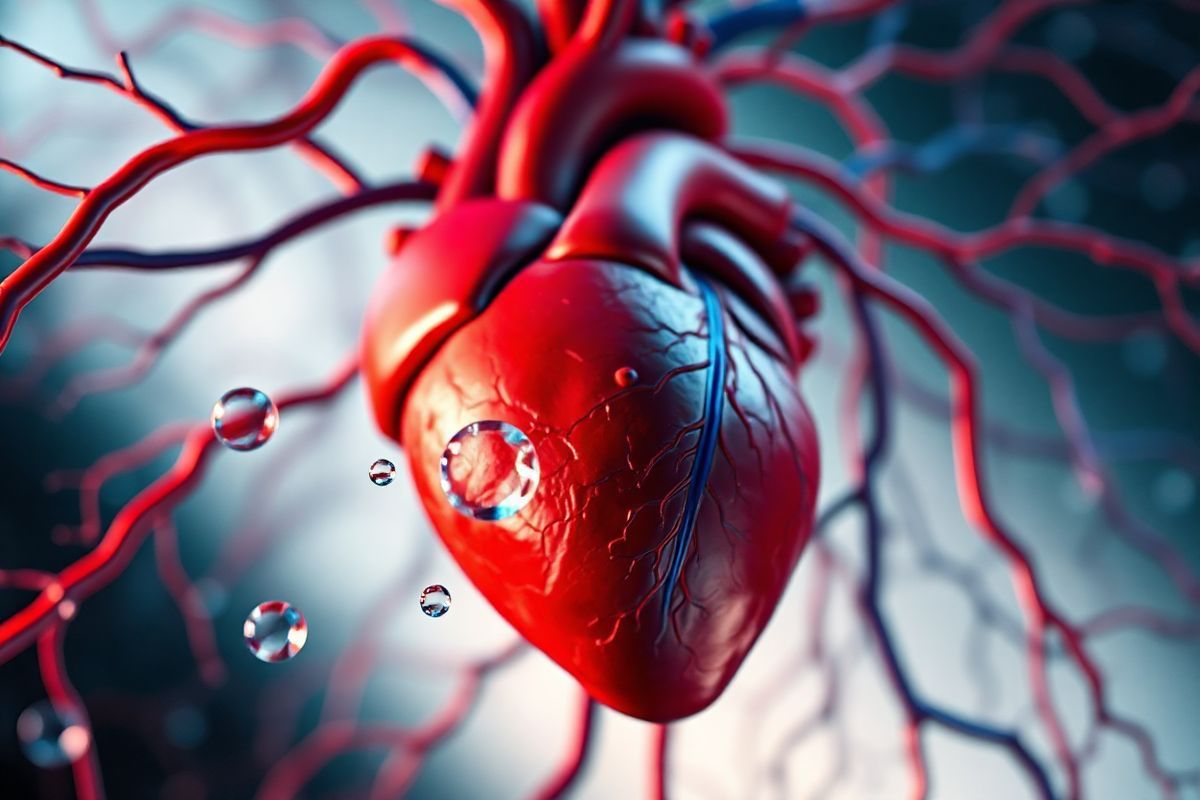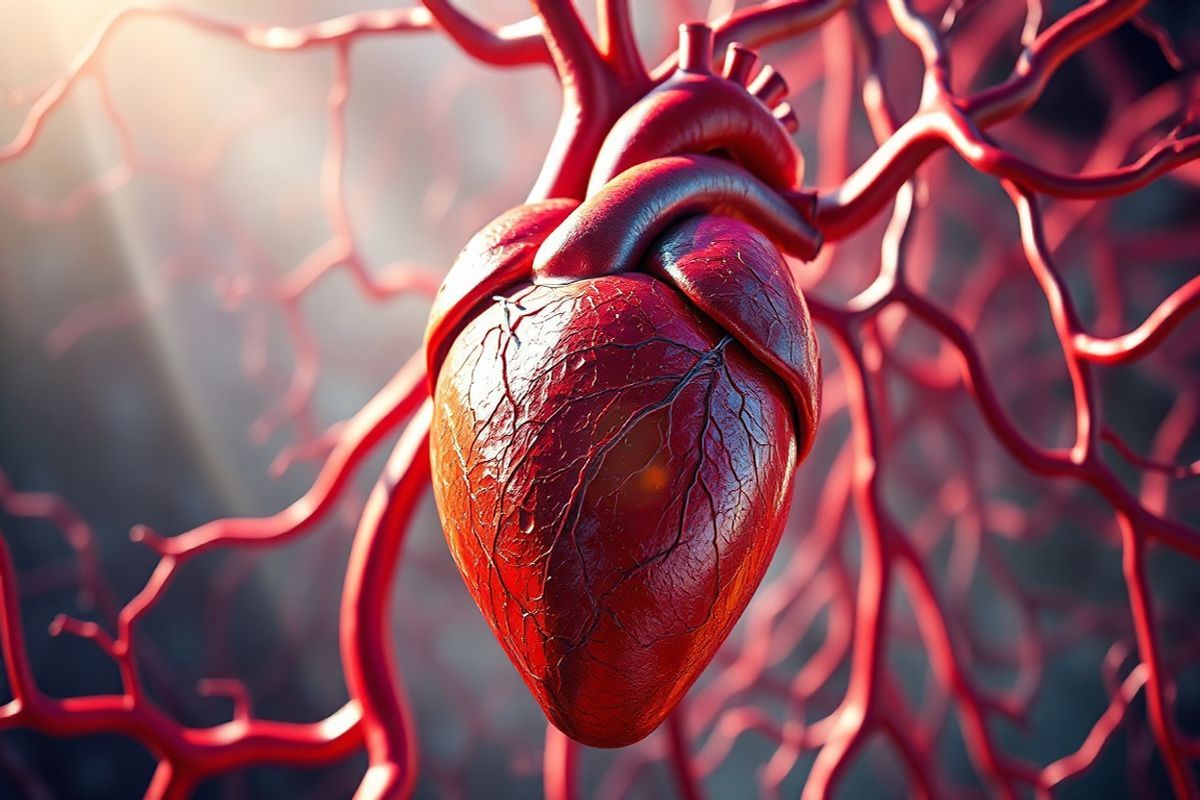Table of Contents
Understanding Vascular Disease: The Silent Threat to Your Circulatory System

Vascular diseases are conditions that primarily affect the arteries and veins, critical components of the circulatory system that facilitate blood flow throughout the body. These diseases often go unnoticed until they manifest as severe health issues, making them a silent threat to many individuals. The primary concern with vascular diseases is their ability to impede blood flow, either through blockages or by weakening blood vessels. This can lead to significant complications, including heart attacks, strokes, and peripheral arterial disease (Stanford Health Care, 2023).
atherosclerosis, characterized by the buildup of fatty deposits in the inner lining of arteries, is a common cause of vascular diseases. It primarily affects the carotid arteries (supplying blood to the brain), coronary arteries (supplying blood to the heart), and the peripheral arteries (supplying blood to limbs). The condition can begin in childhood and progresses over time, posing a risk of severe health complications if not managed appropriately. The systemic nature of atherosclerosis means that its presence in one area of the body often indicates its presence elsewhere, raising the stakes for individuals diagnosed with vascular conditions.
The Essential Role of Blood Flow: How It Impacts Your Overall Health

Blood flow is essential to maintaining overall health, as it transports oxygen and nutrients to cells while removing waste products. The circulatory system, comprising the heart, blood, and blood vessels, plays a crucial role in this process. Oxygen-rich blood is pumped from the heart through arteries, which branch into smaller arterioles and ultimately into capillaries, where the exchange of gases and nutrients occurs. This intricate network ensures that every cell receives what it needs to function optimally (Cleveland Clinic, 2023).
When blood flow is compromised due to vascular diseases, the body can suffer from various health issues. Insufficient blood flow to the heart can result in ischemic heart disease, while reduced blood supply to the brain may lead to strokes. Furthermore, peripheral artery disease can cause significant discomfort and complications in the limbs, potentially resulting in ulcers or even limb loss. Understanding the significance of blood flow highlights the importance of maintaining vascular health to prevent these serious conditions.
Common Types of Vascular Diseases: Recognizing Symptoms and Conditions
Vascular diseases encompass a range of conditions, each with its own symptoms and treatment options. Some of the most prevalent types include:
-
Peripheral Vascular Disease (PVD): This refers to diseases affecting blood vessels outside the heart and brain. A common form is peripheral artery disease (pad), where fatty deposits narrow arteries, especially in the legs. Symptoms may include pain, skin discoloration, and non-healing wounds (Medical News Today, 2023).
-
Carotid Artery Disease: The buildup of plaque in the carotid arteries can lead to strokes. Often asymptomatic, it may present as sudden weakness, numbness, or difficulty speaking during a transient ischemic attack (mini-stroke) (Medical News Today, 2023).
-
Chronic venous Insufficiency (CVI): This condition occurs when veins struggle to send blood back to the heart, often leading to swelling and pain in the legs. Severe cases can result in skin ulcers or varicose veins (Medical News Today, 2023).
-
Deep Vein thrombosis (DVT): A blood clot in a deep vein, usually in the legs, can cause swelling and pain. If the clot dislodges, it can travel to the lungs, resulting in a pulmonary embolism, a life-threatening condition (Medical News Today, 2023).
-
Aneurysms: An aneurysm is a bulge in a weakened arterial wall, which can rupture, causing severe bleeding. Aortic aneurysms are particularly dangerous and may not present symptoms until a rupture occurs (Medical News Today, 2023).
Recognizing the symptoms associated with these vascular diseases is critical for timely diagnosis and treatment, which can greatly improve outcomes.
Risk Factors for Vascular Disease: What You Need to Know to Stay Healthy
Understanding the risk factors for vascular diseases can empower individuals to make healthier lifestyle choices. Some common risk factors include:
- Age: Individuals over 60 are at a higher risk for developing vascular diseases.
- Obesity: Excess weight places additional strain on the circulatory system.
- Sedentary Lifestyle: Lack of physical activity can contribute to poor vascular health.
- Unhealthy Diet: Diets high in trans fats and saturated fats can lead to atherosclerosis.
- Smoking: Tobacco use is a leading risk factor for vascular disease, significantly increasing the likelihood of complications (Medical News Today, 2023).
- Family History: A genetic predisposition to vascular diseases can increase risk.
- Chronic Conditions: Conditions such as high cholesterol, hypertension, and diabetes are significant risk factors and should be managed carefully to protect vascular health.
By identifying and addressing these risk factors, individuals can take proactive steps to reduce their risk of developing vascular diseases.
Preventative Measures and Treatments: Enhancing Blood Flow and Managing Vascular Health
Preventing vascular diseases and managing existing conditions requires a multifaceted approach that addresses lifestyle, medical interventions, and education. Here are some effective strategies:
-
Lifestyle Modifications:
- Diet: A heart-healthy diet rich in fruits, vegetables, whole grains, and lean proteins can help maintain healthy cholesterol levels and blood pressure.
- Exercise: Regular physical activity improves circulation, strengthens the heart, and aids in weight management.
- Quit Smoking: Eliminating tobacco use is one of the most effective ways to improve vascular health.
- Weight Management: Maintaining a healthy weight reduces stress on the cardiovascular system.
-
Medical Treatments:
- Medications: Statins, antihypertensives, and blood thinners may be prescribed to manage cholesterol levels, blood pressure, and reduce the risk of clotting, respectively (Stanford Health Care, 2023).
- Surgical Interventions: In severe cases, procedures such as angioplasty, bypass surgery, or endovenous laser therapy may be necessary to improve blood flow and alleviate symptoms (Medical News Today, 2023).
- Regular Check-ups: Routine medical evaluations can help identify risk factors early and allow for timely intervention.
-
Education and Awareness: Understanding vascular diseases, their symptoms, and risk factors can empower individuals to seek medical attention promptly, leading to better outcomes.
Table: Common Vascular Diseases and Their Management
| Condition | Symptoms | Treatment Options |
|---|---|---|
| Peripheral Vascular Disease | Pain, skin discoloration, ulcers | Lifestyle changes, medications, surgical interventions |
| Carotid Artery Disease | Often asymptomatic; possible stroke | Lifestyle changes, medications, carotid endarterectomy |
| Chronic Venous Insufficiency | Swelling, varicose veins | Compression stockings, lifestyle changes, surgical options |
| Deep Vein thrombosis | Swelling, pain in the leg | Anticoagulant medications, compression therapy |
| Aneurysms | Often asymptomatic until rupture | Monitoring, surgical repair if necessary |
FAQ
1. What are the early signs of vascular disease? Early signs can include unexplained leg pain, swelling in the feet or legs, high blood pressure, and various symptoms indicating reduced blood flow to organs.
2. How can I improve my vascular health? Improving vascular health can be achieved through a balanced diet, regular exercise, quitting smoking, and managing any chronic health conditions.
3. Are there any specific tests for diagnosing vascular diseases? Yes, tests such as ultrasound, angiography, and ankle-brachial index (ABI) tests are commonly used to diagnose vascular diseases.
4. Can vascular diseases be reversed? In some cases, lifestyle changes can halt or even reverse the progression of vascular diseases, particularly in the early stages.
5. When should I see a doctor about vascular health? You should consult a healthcare provider if you experience any symptoms of vascular disease, especially if you have risk factors such as a family history, obesity, or chronic conditions.
References
-
Stanford Health Care. (2023). Vascular Disease Causes. Retrieved from https://stanfordhealthcare.org/medical-conditions/blood-heart-circulation/vascular-disease/causes.html
-
Medical News Today. (2023). Vascular disease: List of conditions and their symptoms. Retrieved from https://www.medicalnewstoday.com/articles/vascular-disease
-
Cleveland Clinic. (2023). How Your Circulatory System Works. Retrieved from https://my.clevelandclinic.org/health/body/circulatory-and-cardiovascular-system
-
Verywell Health. (2023). Order of Blood Flow Through the Heart. Retrieved from https://www.verywellhealth.com/blood-flow-through-the-heart-3156938











